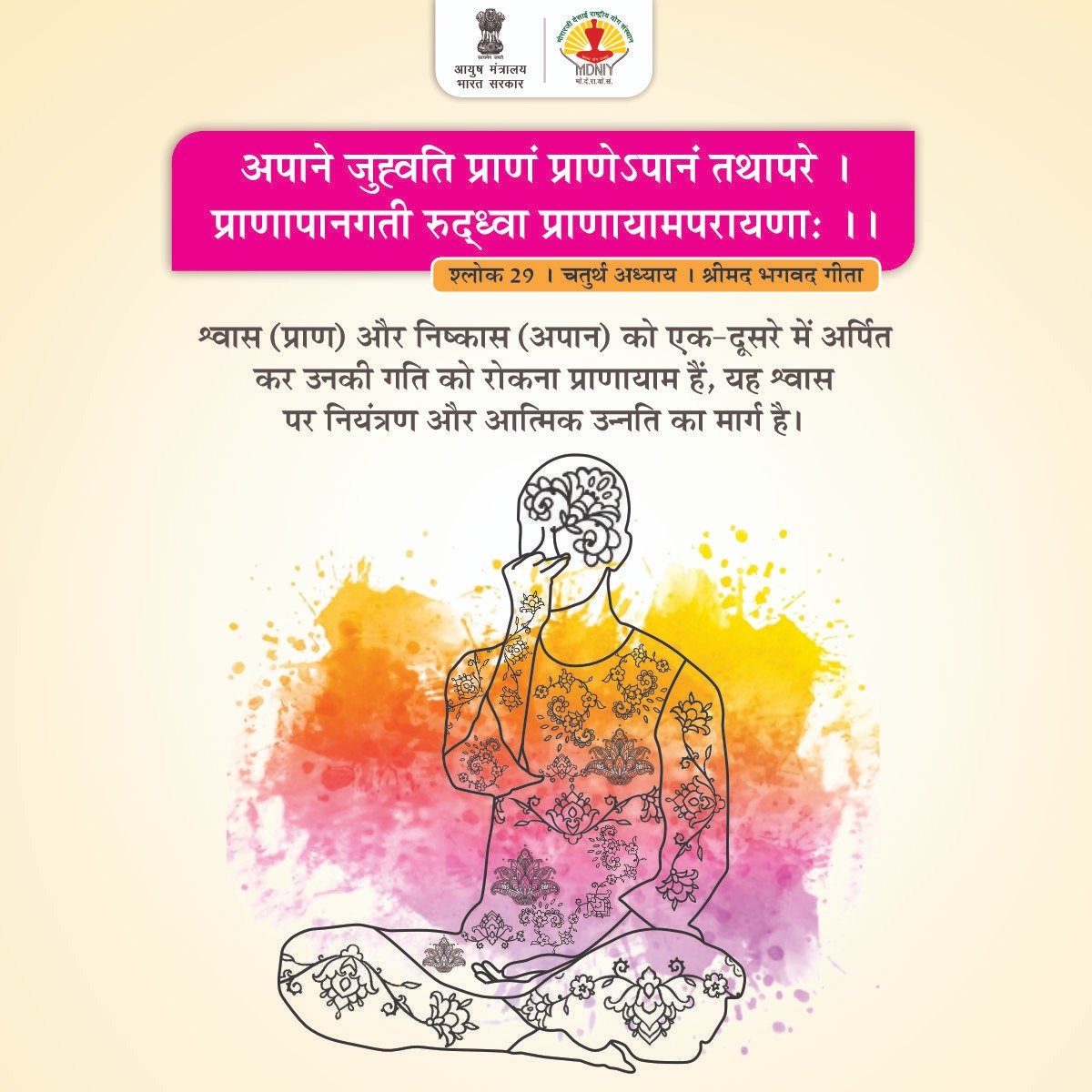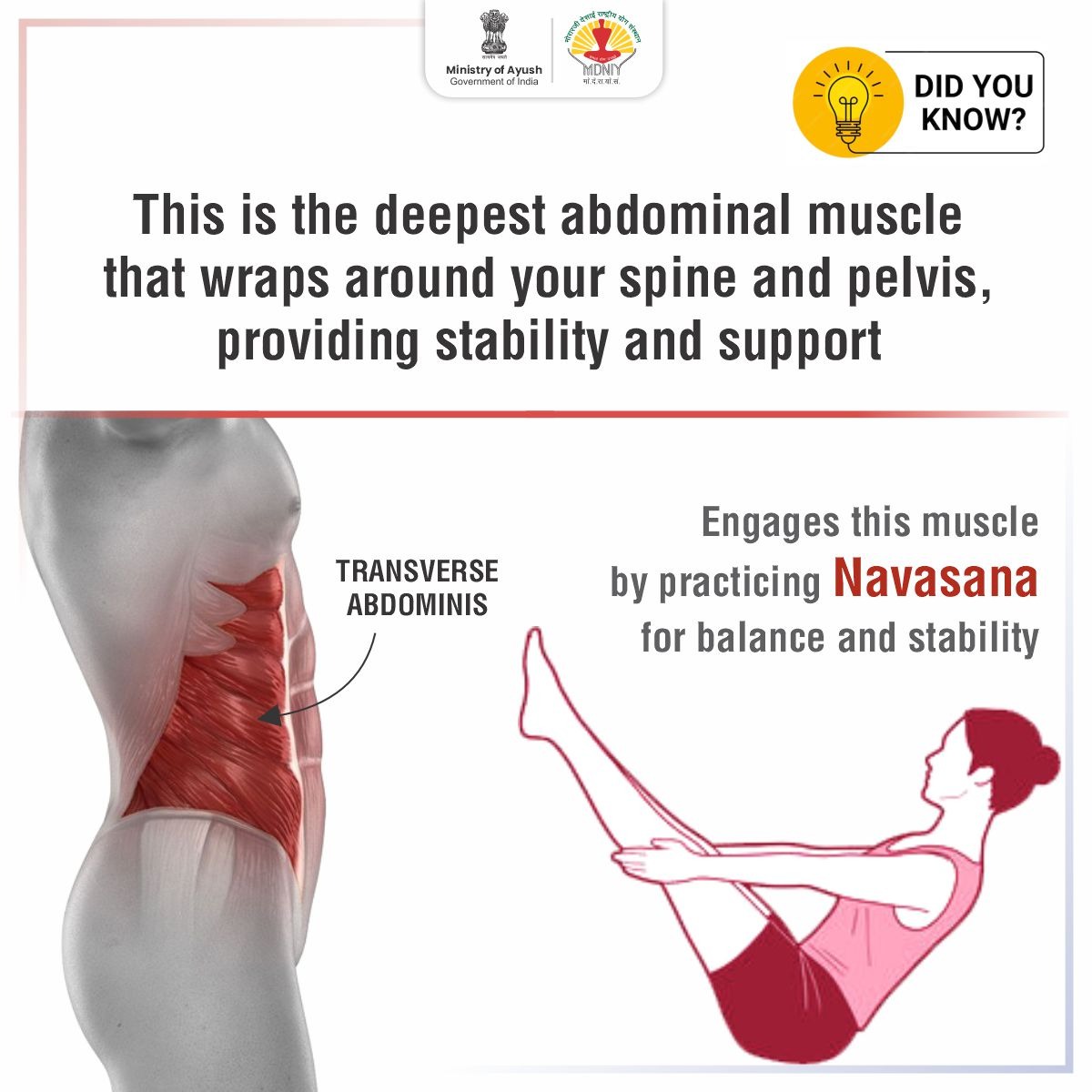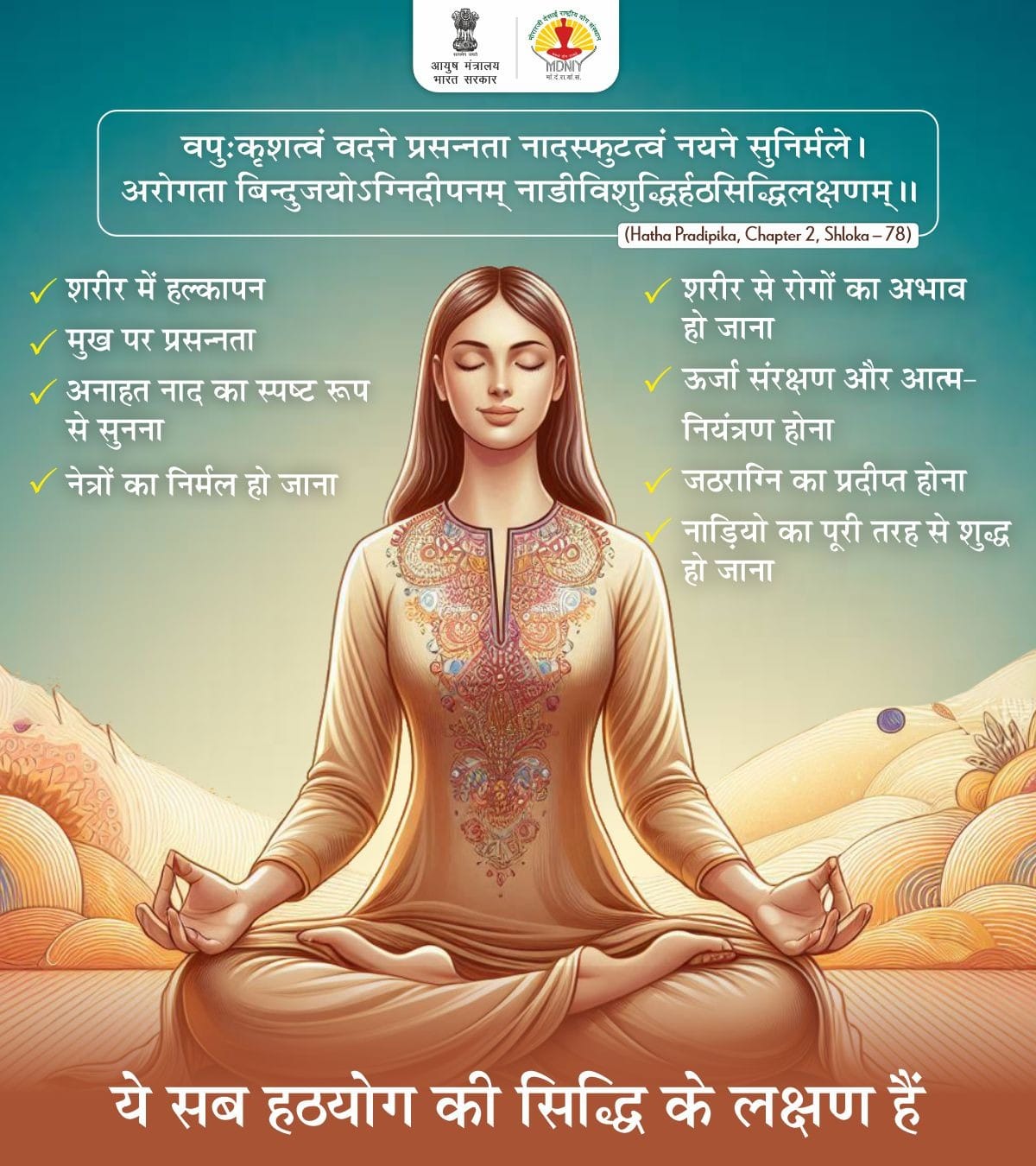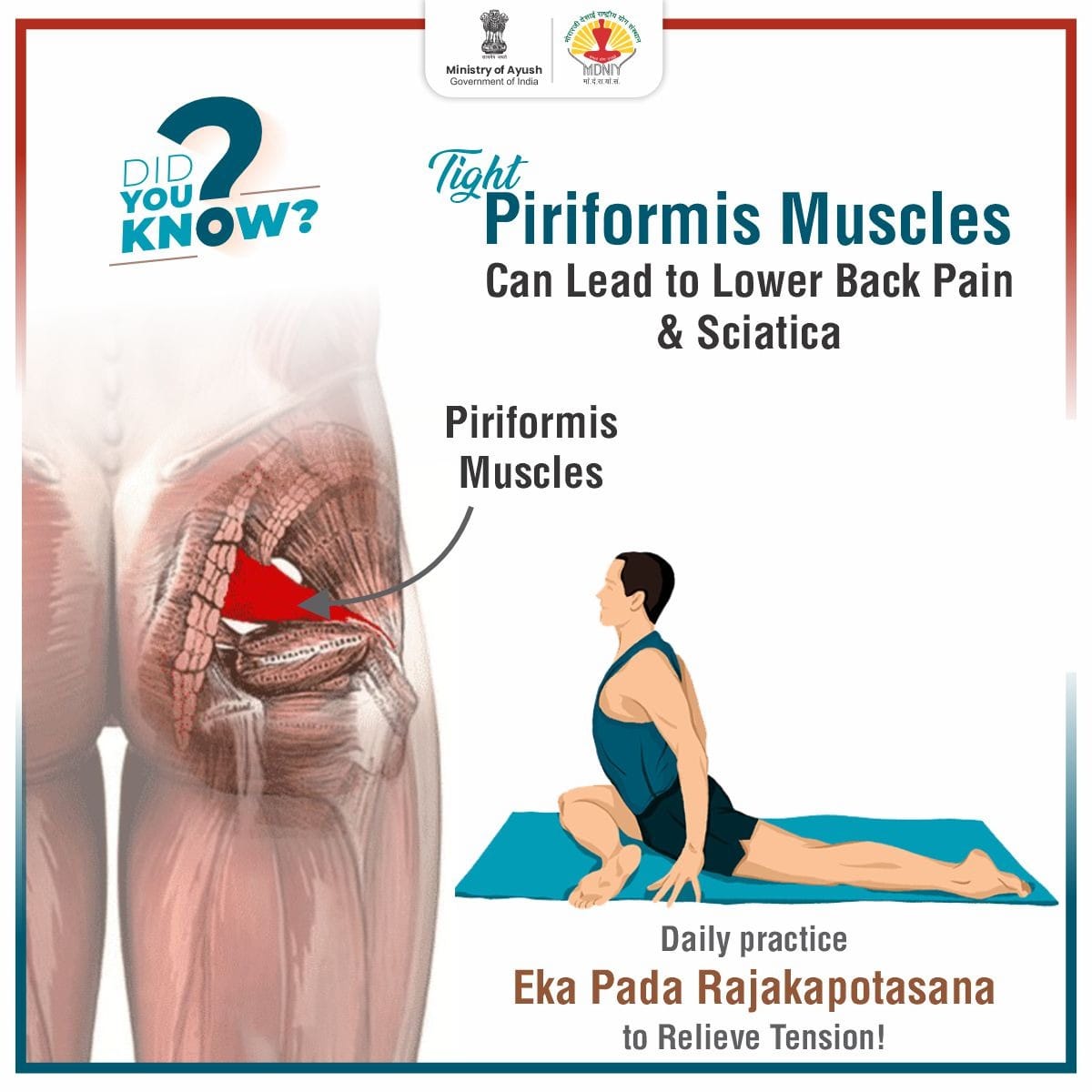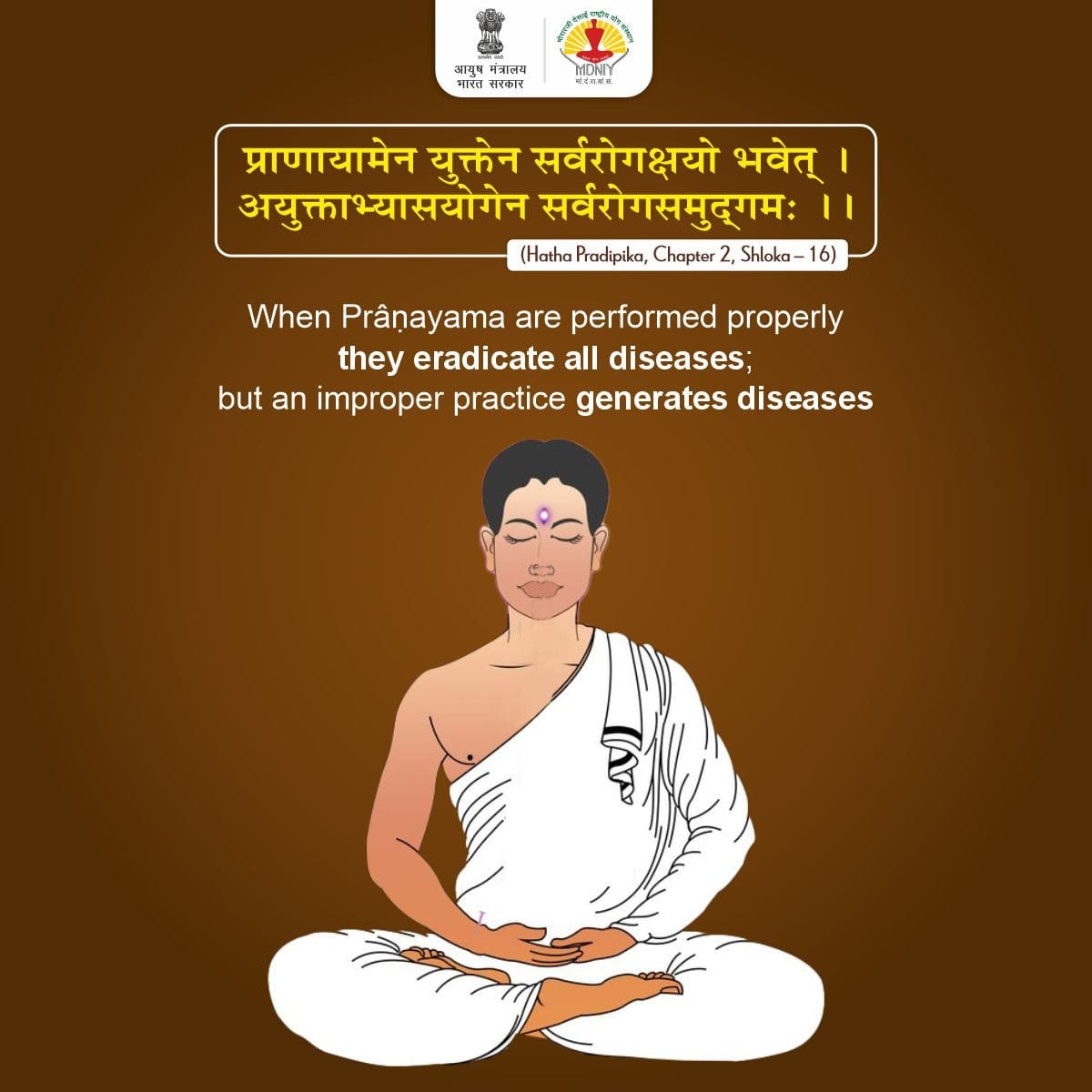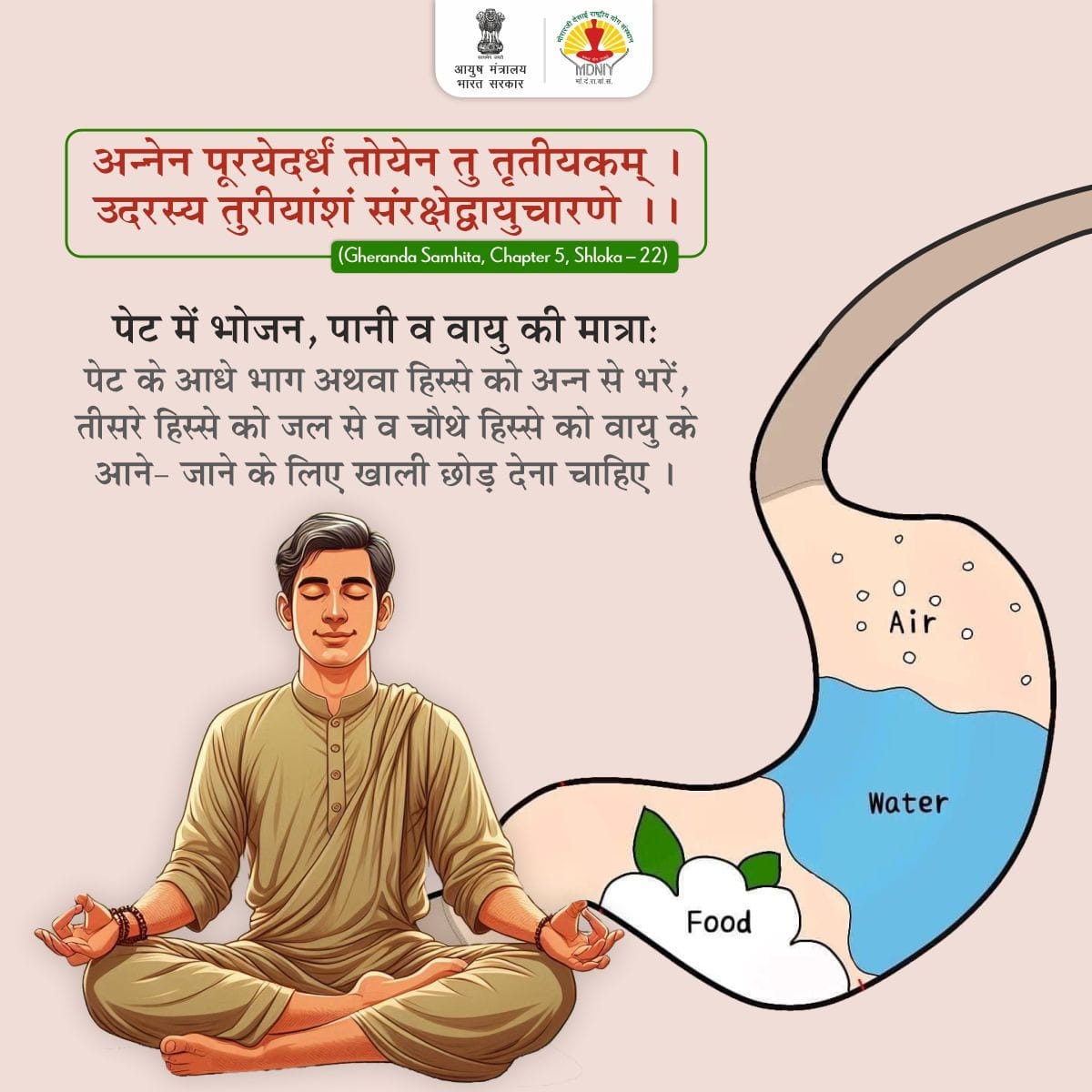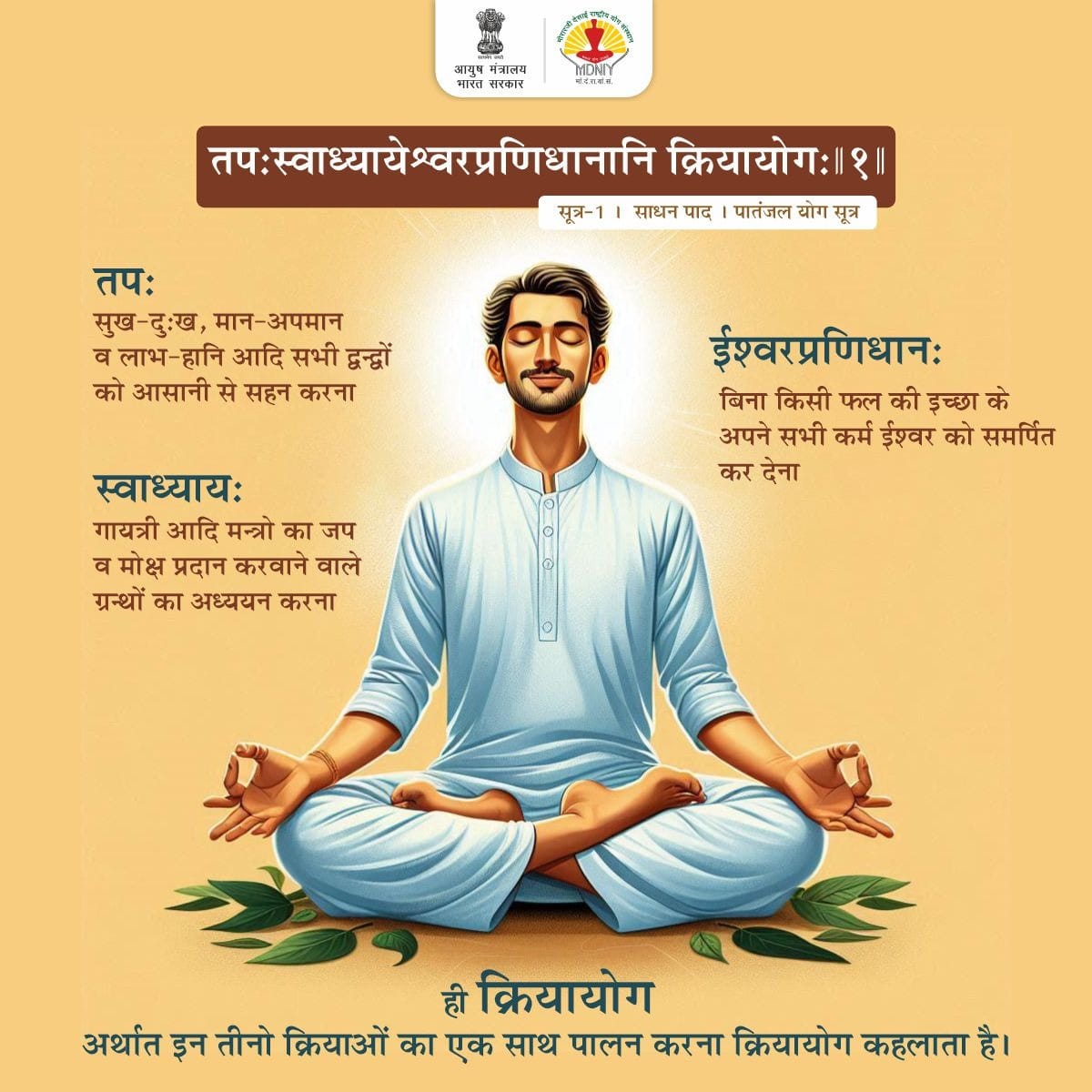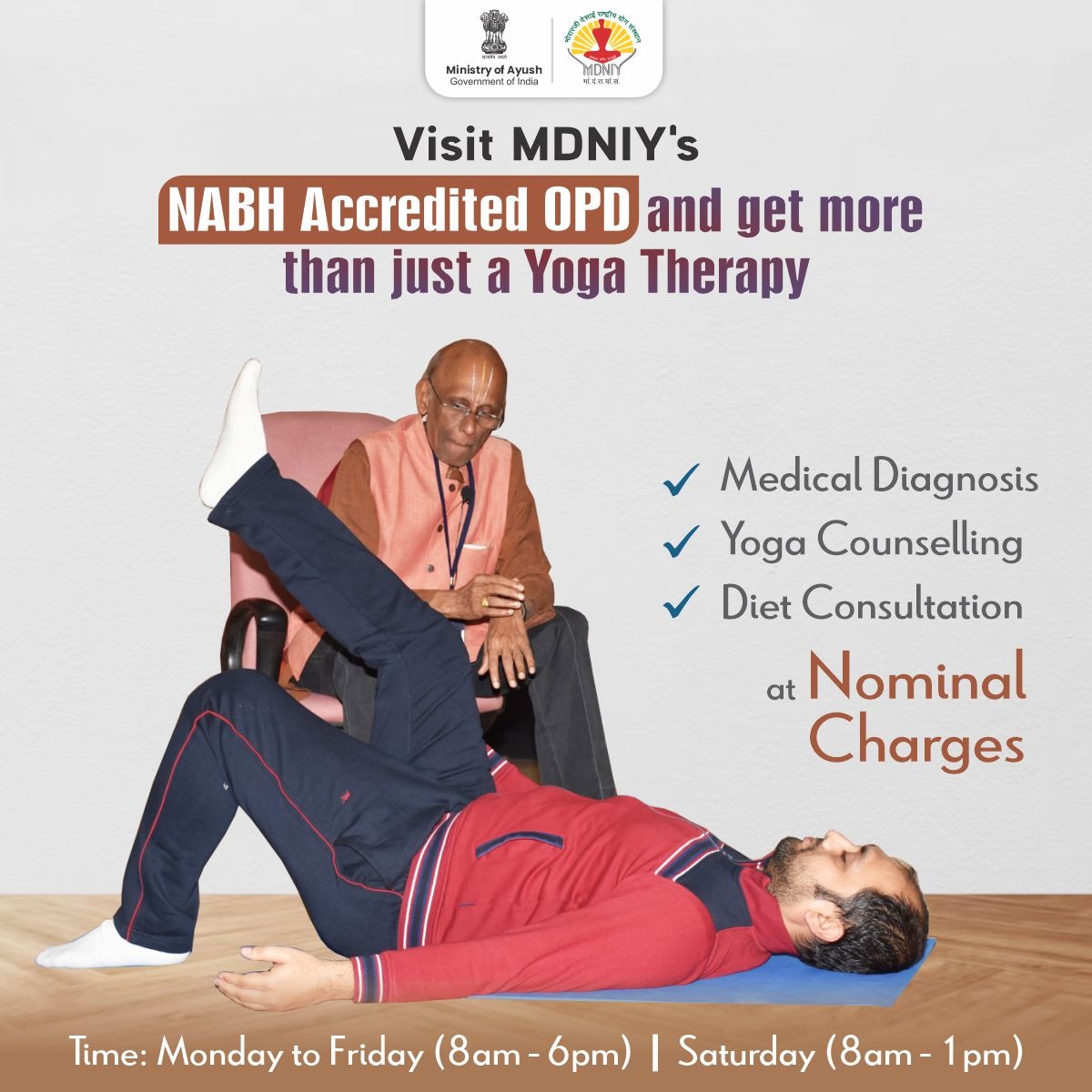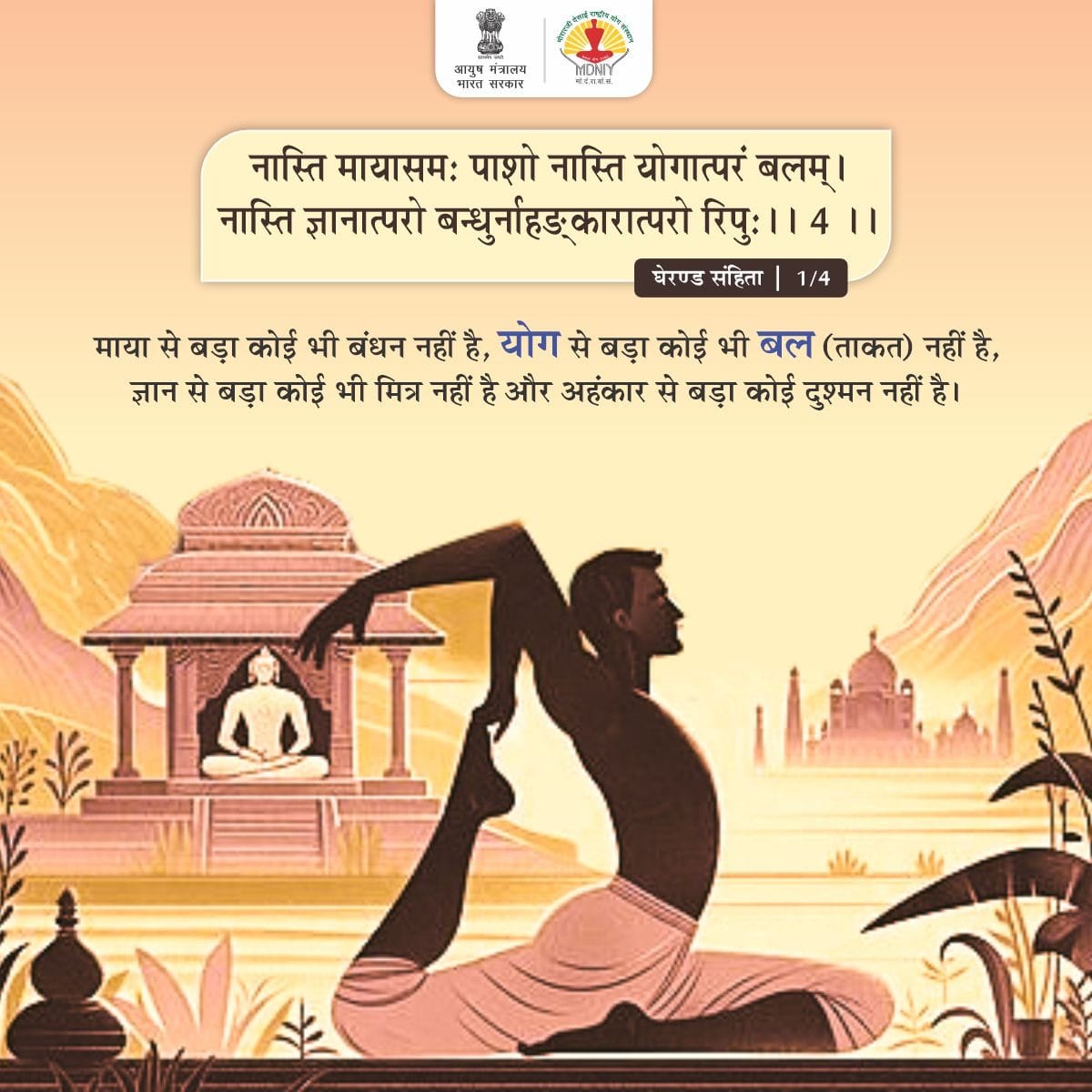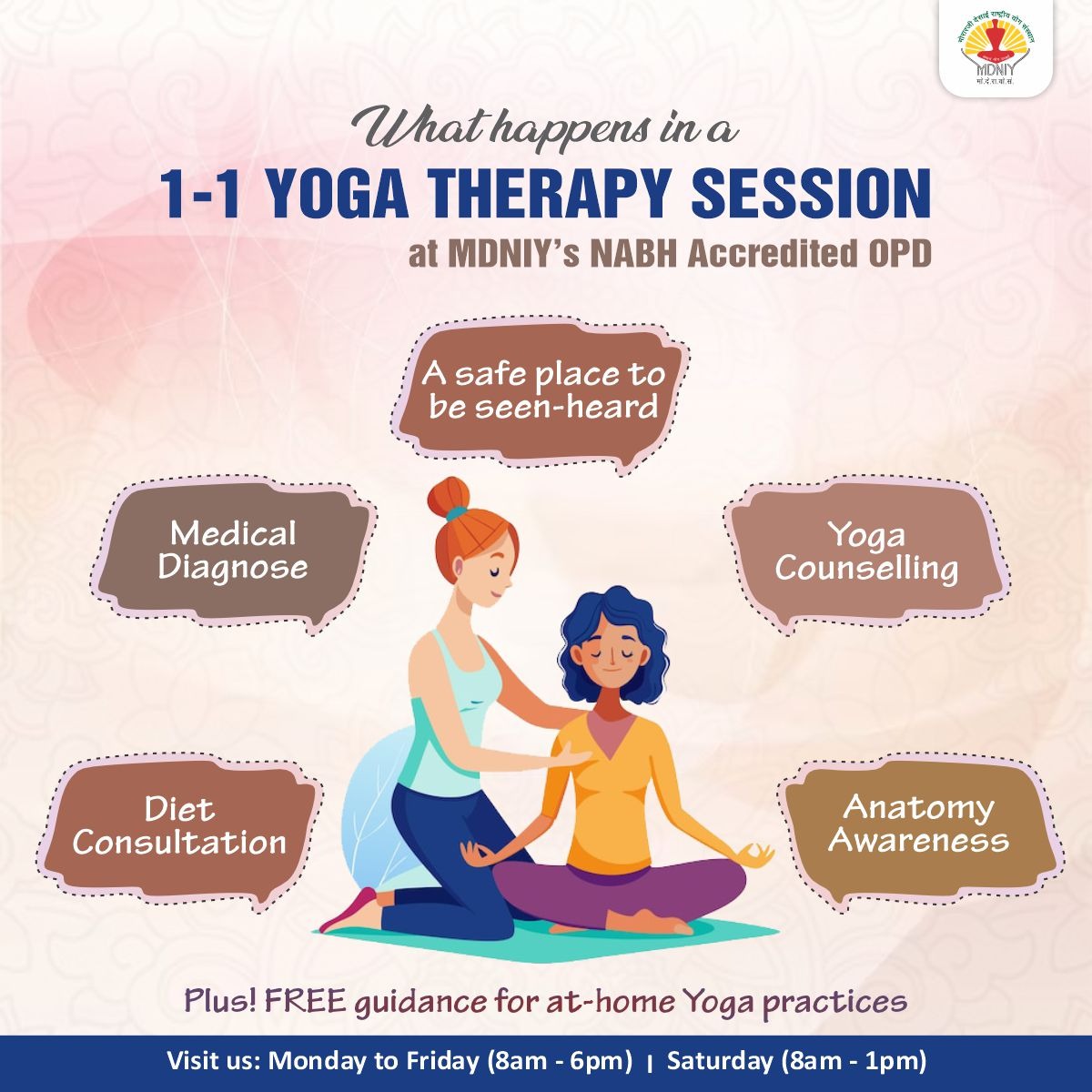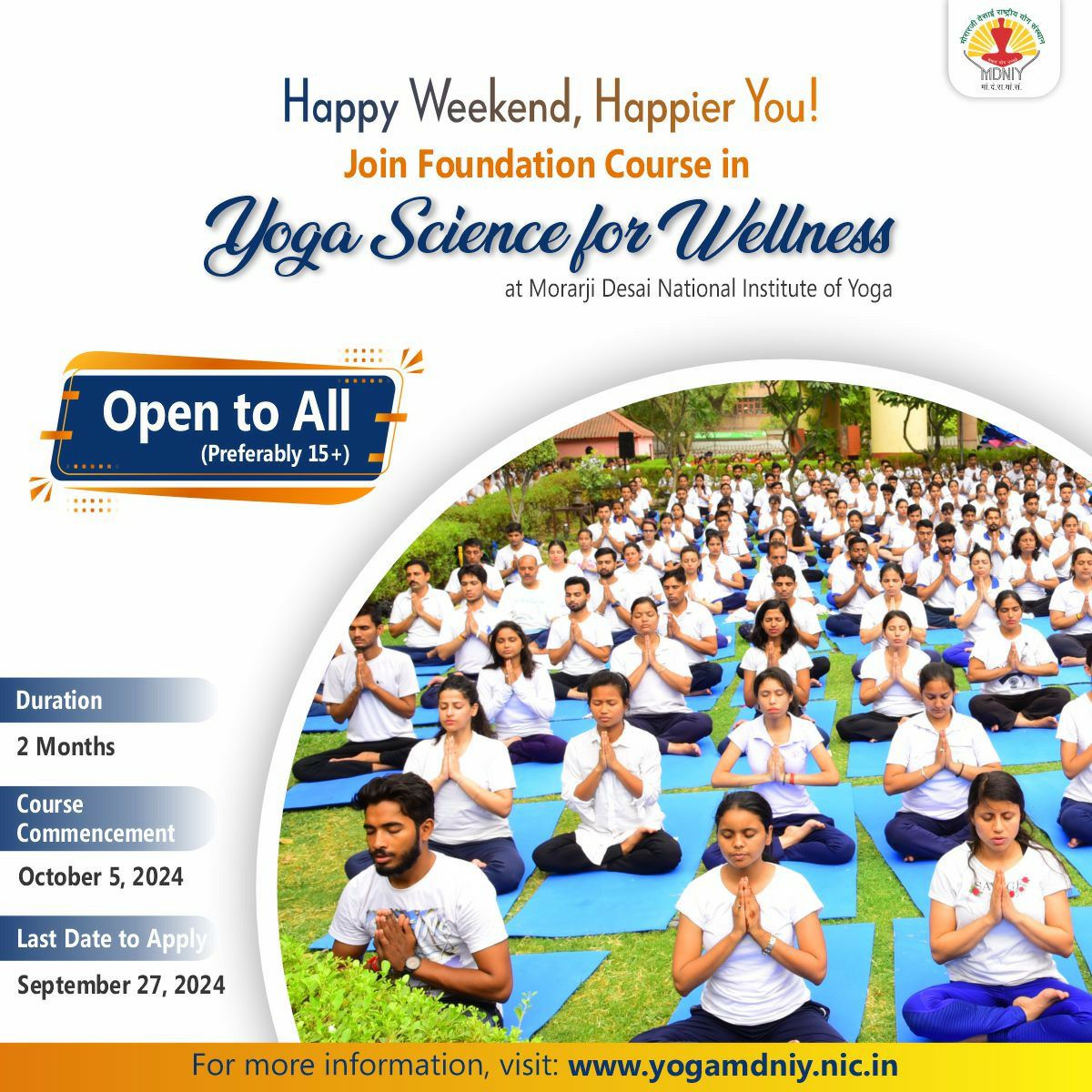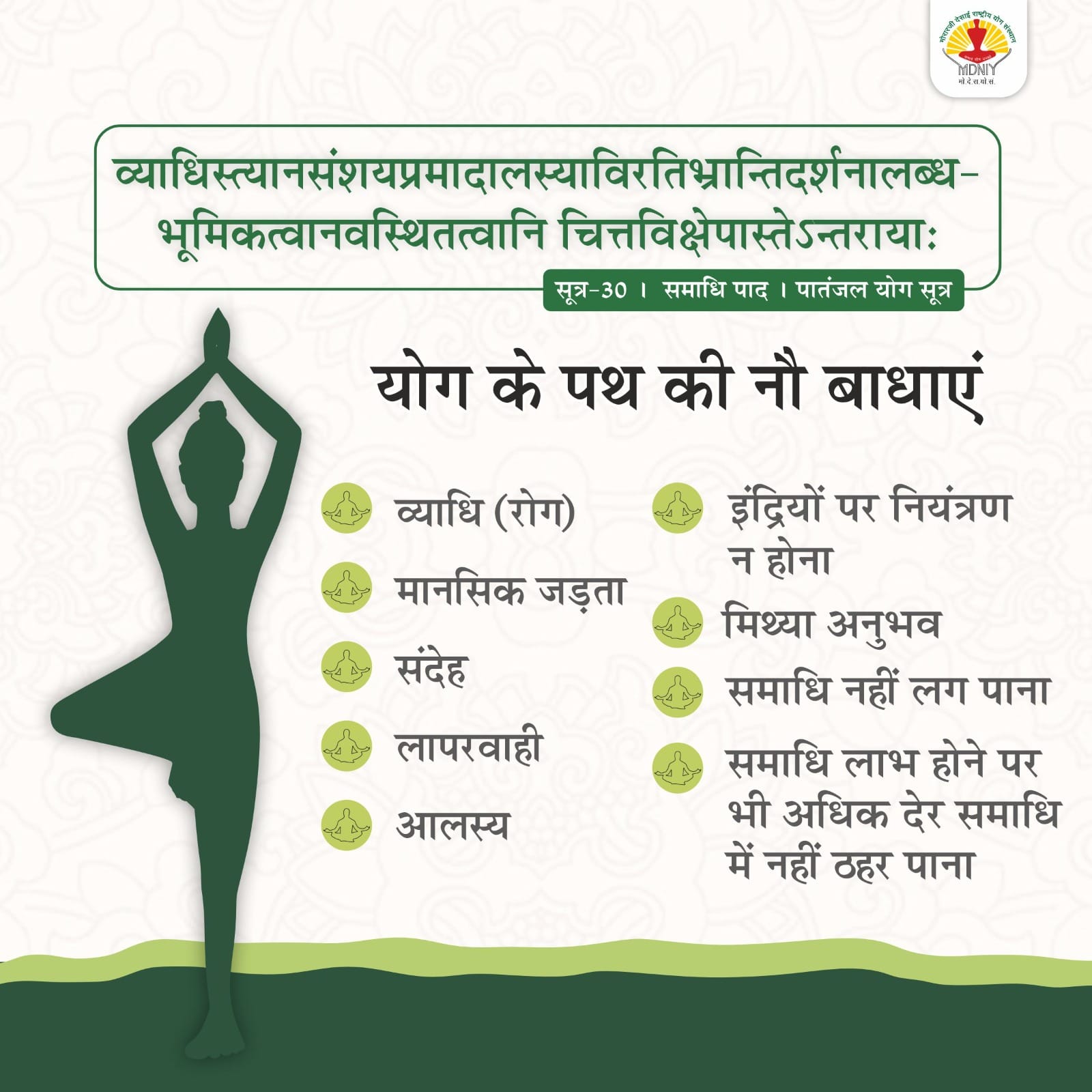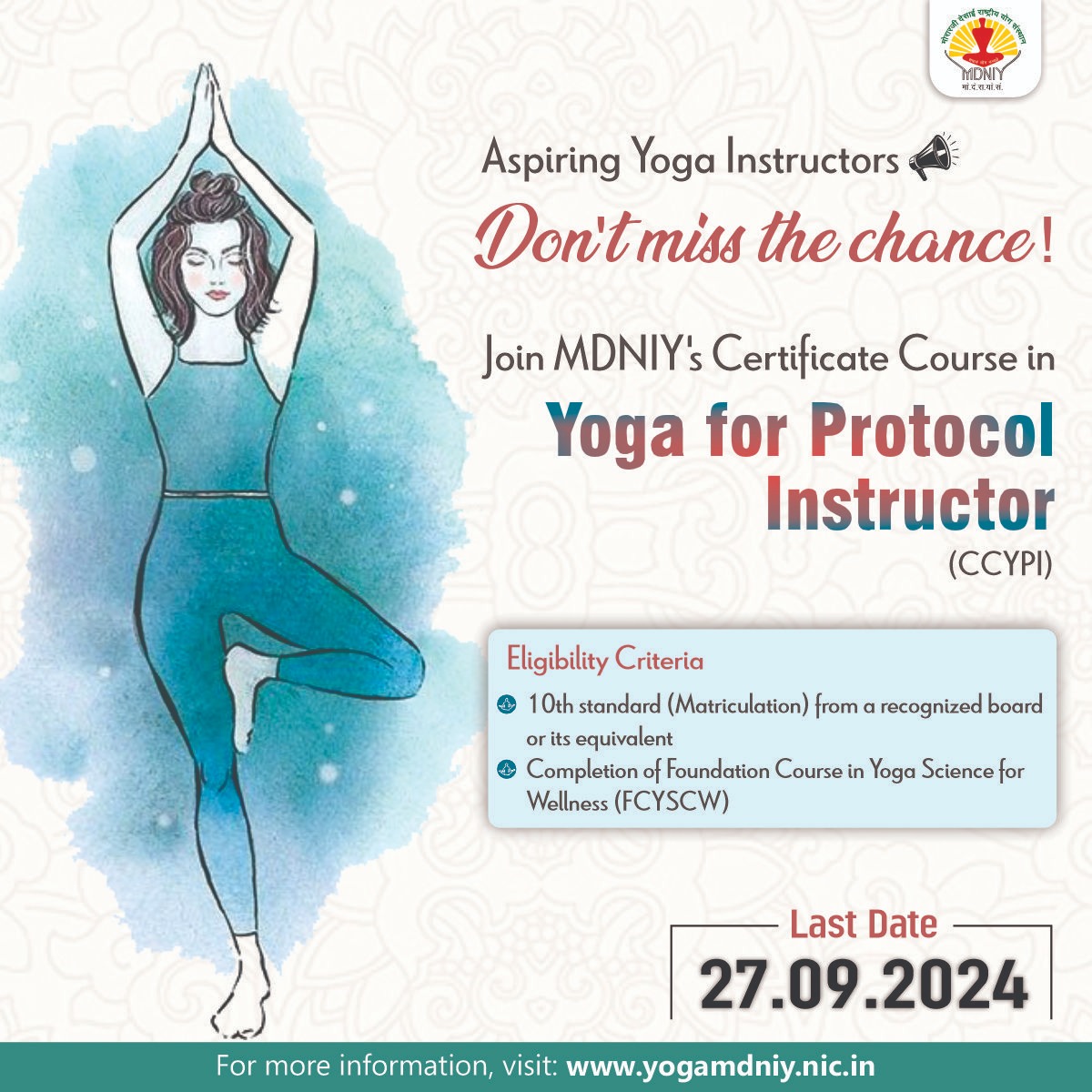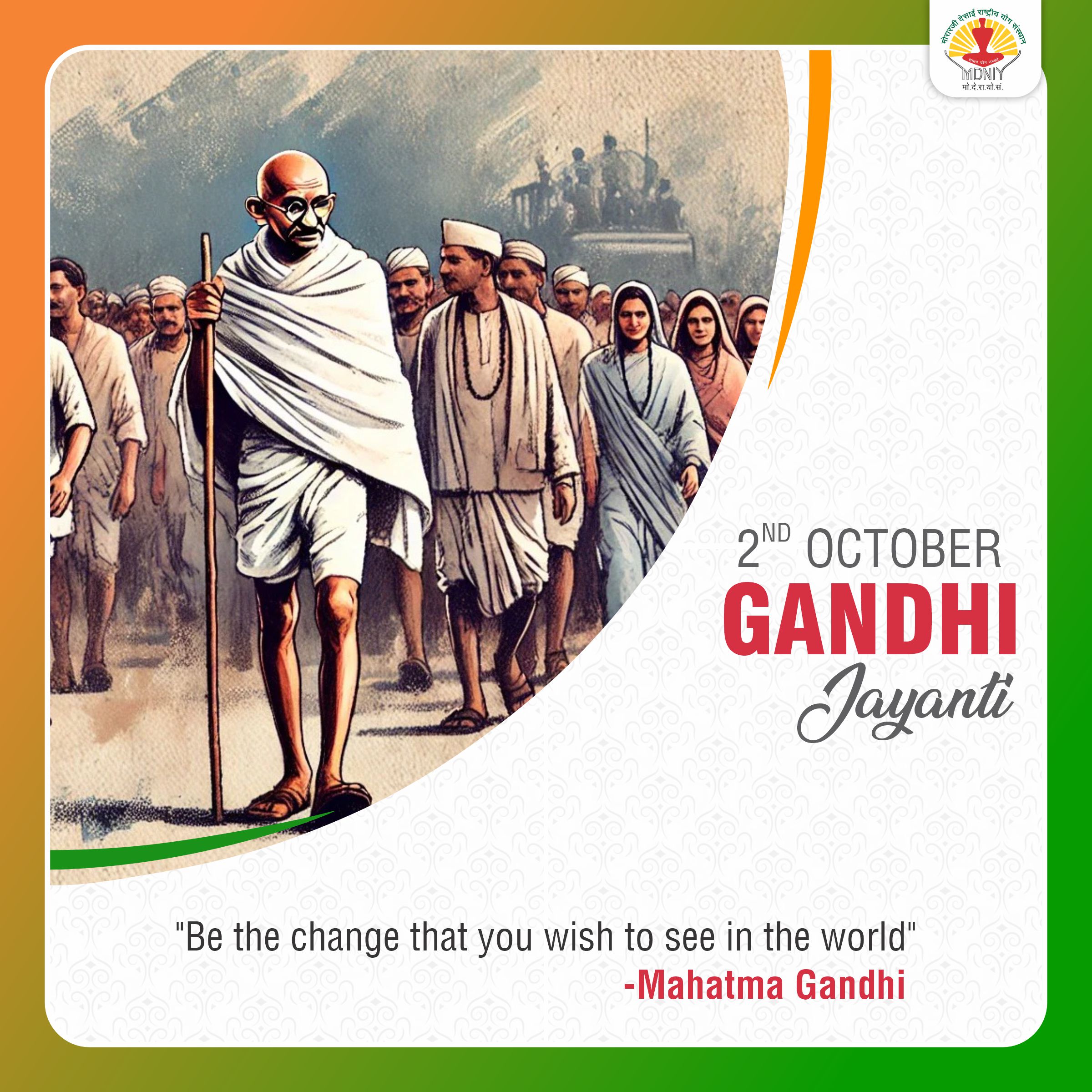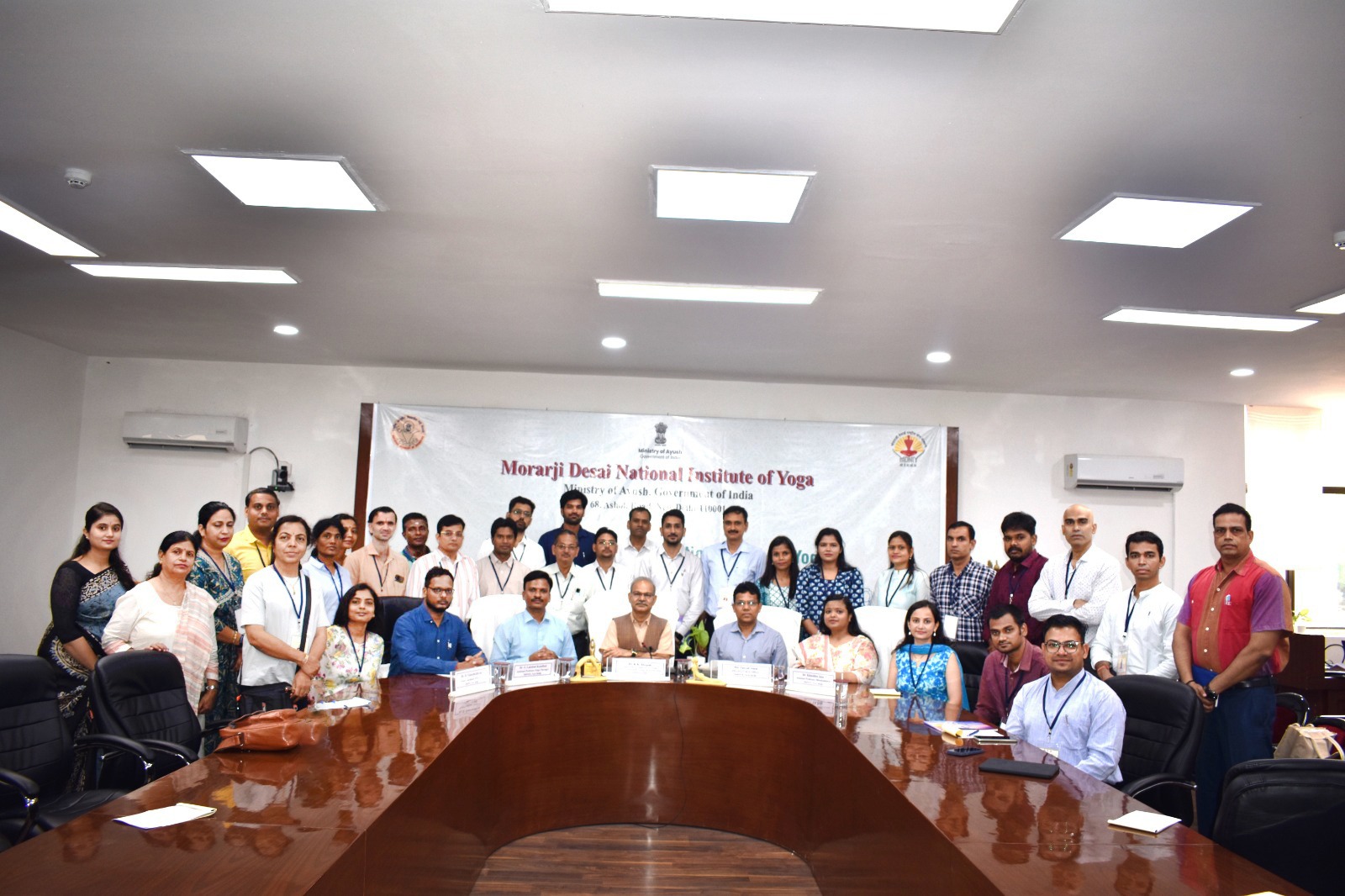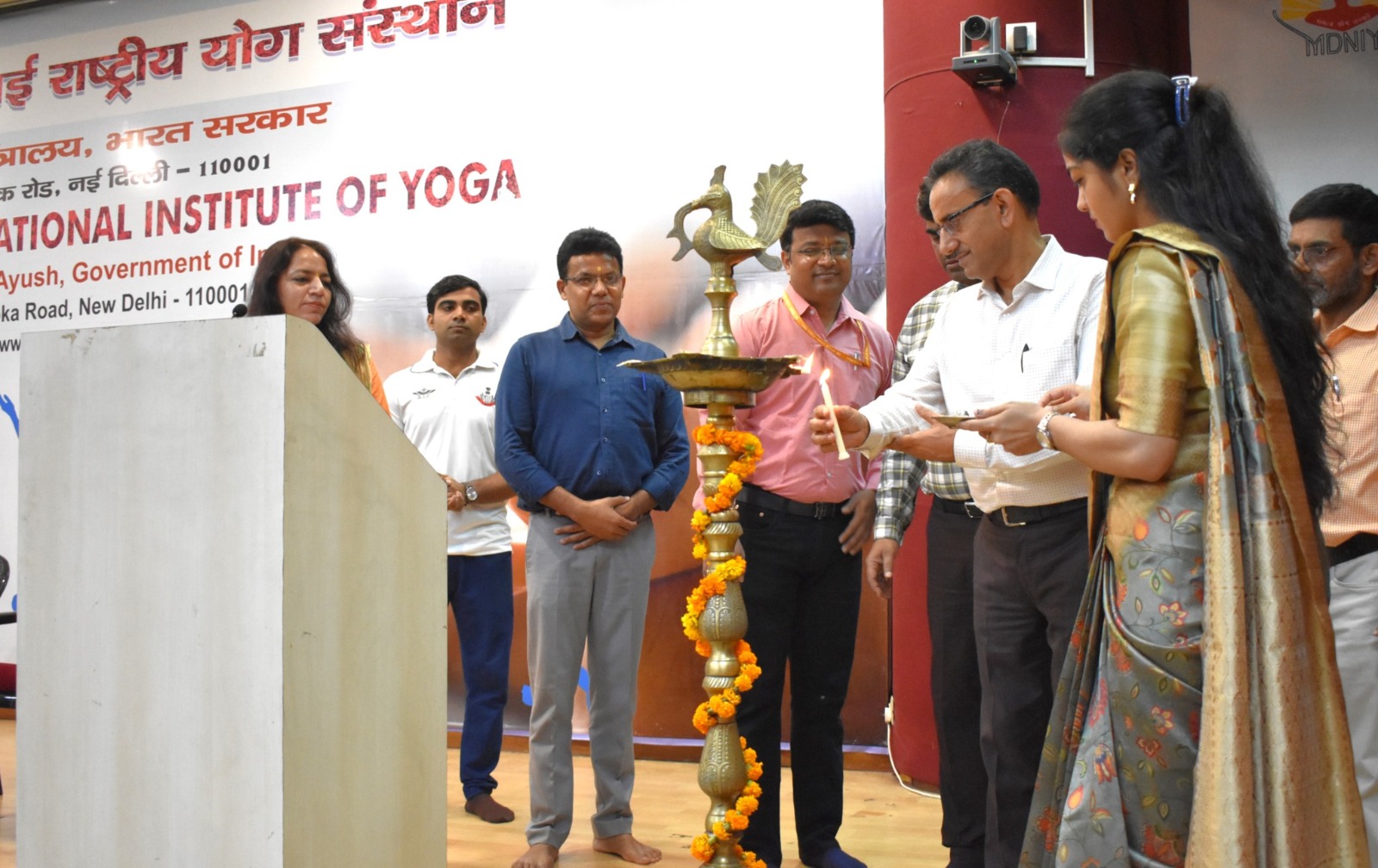

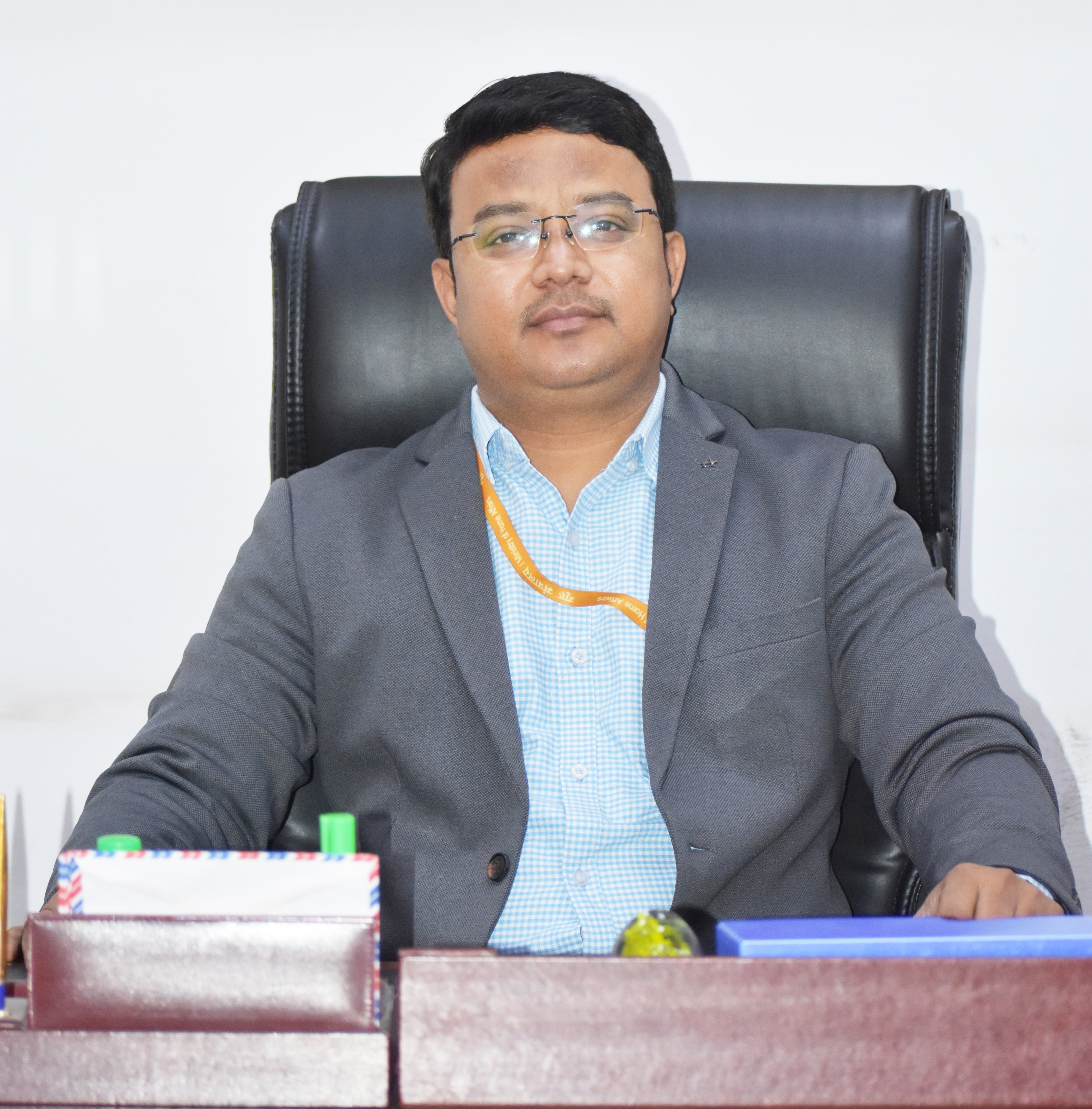
Director's Message
Dr. Kashinath Samagandi
In the timeless pursuit of self-realization, humanity has always sought paths that lead to inner peace, harmony, and the understanding of one's true self. Yoga, an ancient science and art, offers a profound journey inward, promising not only physical wellness but also mental clarity and spiritual awakening. It is in this spirit of holistic development that the Morarji Desai National Institute of Yoga (MDNIY) was founded, embodying the essence of these age-old teachings.

Highlights
Admission Notices
FAQ's
Frequently Asked Questions
The diet for a practitioner of āsana should be well-balanced and nutritious, which emphasizes purity and moderation to support physical, mental, and spiritual well-being. This approach not only provides essential nutrients and sustained energy but also promotes mental clarity, emotional balance, and spiritual growth, facilitating a deeper and more effective Yoga practice.
Āsanas are psycho-physical in nature, meaning they stabilize both the mind and the body, fostering mental clarity, emotional balance, and spiritual growth. They integrate physical postures with breath control and mindfulness, promoting overall well-being and preparing the practitioner for deeper meditation. On the other hand, physical exercises are primarily physical in nature, focusing on enhancing bodily strength, endurance, and fitness, but they do not inherently include the mental and spiritual benefits that āsanas provide.
Āsanas should be performed before prāṇāyāma to prepare the body and mind for deeper breathing practices. Yogic practices should follow a specific order: start with kriyas (cleansing techniques) to purify the body, then move to āsanas (postures) to stabilize and strengthen the body, followed by prāṇāyāma (breath control) to regulate the breath and calm the mind, and finally, meditation to achieve mental clarity and spiritual insight. This sequence ensures a holistic approach to physical, mental, and spiritual well-being.
The Haṭhapradīpikā describes a sequence of āsanas starting with Swastikāsana, Gomukhāsana, Vīrāsana, and Bhadrasana, while other texts offer different sequences. The fundamental principle is that learners should progress from simple to complex āsanas according to their developmental stages. A balanced Yoga practice should follow a structured sequence starting with warm-up poses to prepare the body, followed by Yoga. Always listen to your body and modify poses as needed. A complete practice should include six types of movements: up stretch, forward bending, backward bending, twisting, side bending, and balancing. However, a Yogi or an expert/practitioners can select any sequence based on their specific goals and needs.
The duration of practicing āsanas and prāṇāyāma largely depends on the individual's available time and personal goals. Ideally, a healthy person should dedicate about 30 minutes daily to practicing loosing and āsanas to build strength, flexibility, and balance. Following this, 15 minutes should be spent on prāṇāyāma, the breath control techniques, to enhance respiratory function, calm the mind, and prepare for meditation. This balanced approach ensures comprehensive physical and mental well-being.
<p><p>&lt;p&gt;Yoga is a comprehensive system for physical, mental, and spiritual well-being that originated in ancient India. It encompasses a variety of practices including kriyas, āsanas (physical postures), prāṇāyāma (breathing techniques), meditation, and ethical disciplines. The goal of Yoga is to achieve a state of harmony and balance within oneself and with the surrounding environment, ultimately leading to self-realization and liberation (moksha).&lt;/p&gt;</p></p>
There is a misconception that both are same. Meditation is one of the limbs (parts) of Ashtanga Yoga and Hath Yoga. Yoga as a Whole: Yoga encompasses a wide range of practices, including ethical guidelines, physical postures, breath regulation practices, and meditation. Meditation as a Part: Meditation is a vital component of Yoga but can also be practiced independently. It focuses specifically on training the mind to achieve a state of mindfulness and tranquility.
Yoga is not only for elderly people or those with health issues; it is a versatile practice beneficial for individuals of all ages and fitness levels. Yoga promotes physical strength, flexibility, and balance, as well as mental clarity and stress management. It can be adapted to suit various needs and goals, from intense workouts for athletes to gentle routines for beginners and those with specific health conditions. Consequently, Yoga offers holistic benefits that contribute to overall well-being, making it suitable for anyone seeking to enhance their physical and mental health.
Yes, yoga protocols can vary according to different age groups to accommodate the physical and mental needs of each group. For Children: Yoga often includes a playful approach to engage their attention and develop motor skills. For Teenagers: It can focus on building strength, flexibility, and coping with academic stress and peer pressure. For Adults: They may practice yoga for fitness, stress relief, and mindfulness, with routines tailored to their fitness levels and mental health goals.</p> For the Elderly: They might follow gentle yoga practices emphasizing balance, joint mobility, breathing, and relaxation to maintain physical health, prevent injury, and manage any health ailments. Overall, adaptations ensure that yoga remains safe, effective, and beneficial for people at any stage of life.
No, Kapalbhati is one of the Shatkriya (six cleansing practices) and a prerequisite for Pranayama. Known as the "Skull Shining Breath," it involves a sequence of active exhalations followed by passive inhalations.
An individual is motivated by a variety of factors, including the desire for improved physical health—such as increased flexibility, strength, and balance; stress reduction and emotional stability through breathing practices and relaxation; mental clarity and enhanced focus; spiritual growth and self-awareness; personal growth and self-discipline; connection with a supportive community; increased energy and vitality; mindfulness and present-moment awareness; preventive care to maintain health; and an overall enhancement in quality of life. These diverse benefits inspire an individual to commit to a regular yoga practice and integrate it into their daily lives.
1. Start Position: Sit in a comfortable position with your spine straight and shoulders relaxed. 2. Active Exhalations: Begin with active, forceful exhalations through the nose, contracting the abdominal muscles with each exhalation. 3. Passive Inhalations: Allow passive inhalations to follow naturally without any effort. 4. Beginner Practice: Start with a round of 20-30 active exhalations, then allow the breath to return to normal before repeating for 3 rounds. 5. Gradual Increase: With practice, gradually increase the number of active exhalations, up to 120 times in one round.
Latest















